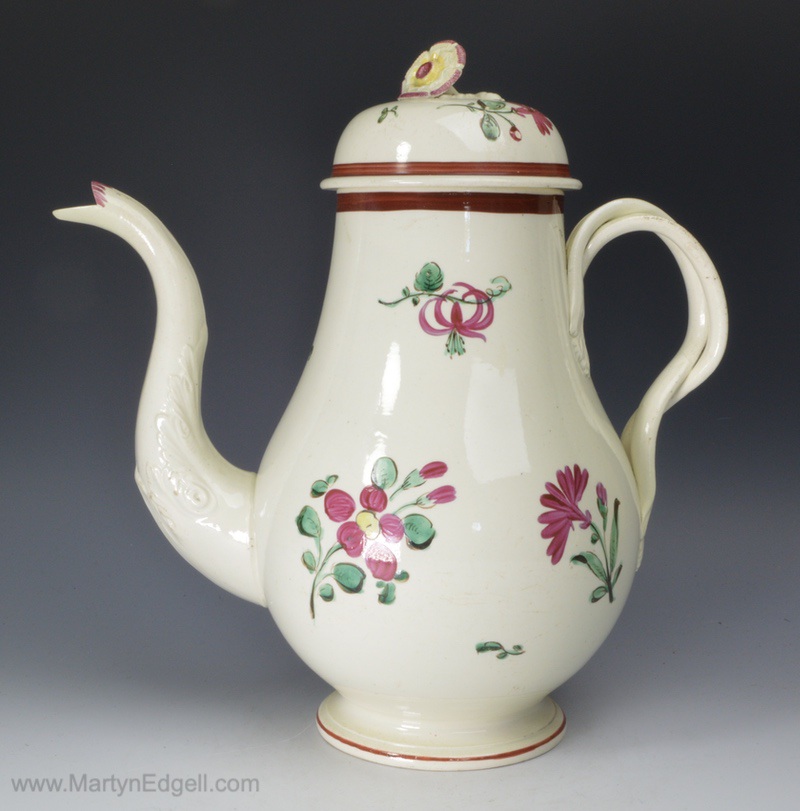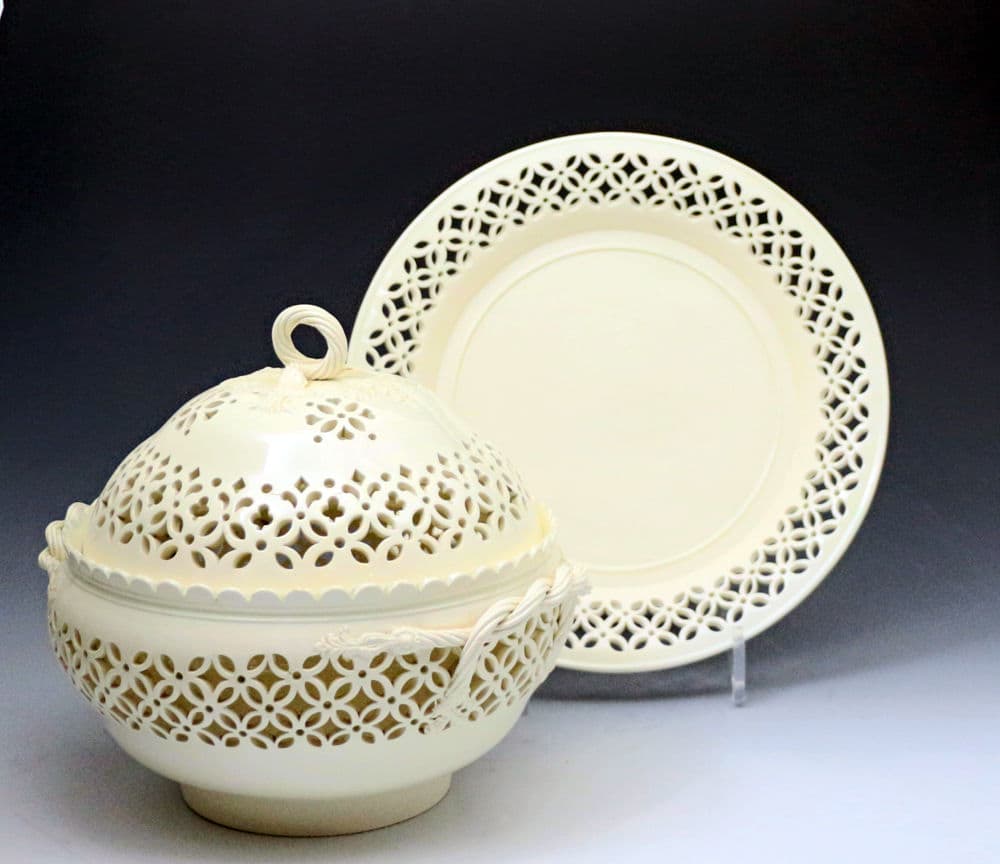
The early process of using lead-powder produced a brilliant, transparent glaze of a rich cream colour.

Private collectionĬreamware during the 18th century was decorated in a variety of ways: Perhaps from the factory of Thomas Whieldon, but not attributable. Decoration Īn early tortoiseshell-decorated creamware plate. Combined with increasingly sophisticated decorative techniques, creamware quickly became established as the preferred ware for the dinner table amongst both middle and upper classes. Several creamware types used moulds originally produced for the earlier salt-glazed stoneware goods, such as the typical plates illustrated opposite. There was considerable inventiveness of form and the use of moulds allowed both greater complexity and ease of mass-production. Forms ĭuring the partnership between Thomas Whieldon and Josiah Wedgwood from 1754 to 1759, moulded creamware in a variety of forms was developed, especially in collaboration with the talented block-cutter William Greatbatch, who produced a variety of Cauliflower, Pineapple, Fruit Basket and other popular wares. By around 1808 a fully whitened version of creamware (known as White Ware) was introduced to meet changing market demand. Pearlware was developed in order to meet demand for substitutes for Chinese porcelain amongst the growing middle classes of the time. Pearlware is distinct from creamware in having a blue-tinged glaze produced by the use of cobalt and a body somewhat modified to produce a ware that was slightly greyish in appearance. One important ware of note however is pearlware, of which there was an increase around 1779. There were few changes to creamware after about 1770 and the Wedgwood formula was gradually adopted by most manufacturers. His superior creamware, known as ‘Queen's ware’, was supplied to Queen Charlotte and Catherine the Great and later became hugely popular. Wedgwood improved creamware by introducing china-clay into both the body and glaze and so was able to produce creamware of a much paler colour, lighter and stronger and more delicately worked, perfecting the ware by about 1770. Showing typical patterns of border decoration.

įragment of moulded 18th-century creamware found on Thames foreshore, central London, August 2017. Wedgwood rebelled against the use of coloured glazes, declaring as early as 1766 that he was clearing his warehouse of coloured ware as he was ‘heartily sick of the commodity’. The young Josiah Wedgwood was in partnership with Thomas Whieldon from 1754 to 1759 and after Wedgwood had left to set up independently at Ivy House, he immediately directed his efforts to the development of creamware. He first mentions ‘Cream Colour’ in 1749. Although he has become popularly associated almost exclusively with tortoiseshell creamware, in fact he produced a wide variety of creamware. The method involved first firing the ware to a biscuit state, and then glazing and re-firing it.įoremost of the pioneers of creamware in the Staffordshire Potteries was Thomas Whieldon. Īround 1740 a fluid glaze in which the ingredients were mixed and ground in water was invented, possibly by Enoch Booth of Tunstall, Staffordshire, according to one early historian, although this is disputed. This early method was unsatisfactory because lead powder produced poisoning among the potters and the grinding of flint stones caused a disease known as potter's rot. Originally lead powder or galena, mixed with a certain amount of ground calcined flint, was dusted on the ware, which was then given its one and only firing. Development Ĭreamware was first produced some time before 1740. On display at the British Museum, London.

Josiah Wedgwood: Four creamware plates depicting Aesop's Fables. It was often made in the same fashionable and refined styles as porcelain. It served as an inexpensive substitute for the soft-paste porcelains being developed by contemporary English manufactories, initially in competition with Chinese export porcelains. Variations of creamware were known as "tortoiseshell ware" or "Whieldon ware" were developed by the master potter Thomas Whieldon with coloured stains under the glaze. It was created about 1750 by the potters of Staffordshire, England, who refined the materials and techniques of salt-glazed earthenware towards a finer, thinner, whiter body with a brilliant glassy lead glaze, which proved so ideal for domestic ware that it supplanted white salt-glaze wares by about 1780. Victoria & Albert Museum, LondonĬreamware is a cream-coloured refined earthenware with a lead glaze over a pale body, known in France as faïence fine, in the Netherlands as Engels porselein, and in Italy as terraglia inglese. Transfer-printed in purple enamel by Guy Green of Liverpool. Josiah Wedgwood: Tea and coffee service, c.


 0 kommentar(er)
0 kommentar(er)
